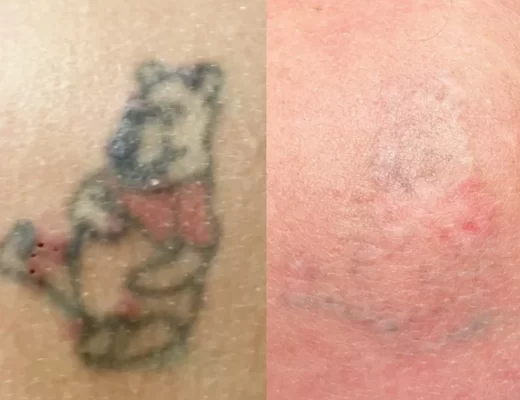Scars are a natural part of the healing process after an injury or any other traumatic event that causes damage to the skin. Most wounds, regardless of their size and severity, will leave a mark. However, there are certain factors that can influence the extent and visibility of a scar.
What is a scar?
A scar is the body’s way of repairing and replacing damaged skin. When the dermis, the second layer of the skin, is injured, the body produces collagen fibers to mend the wound. The collagen fibers create a scar, which is usually different in color and texture from the surrounding skin.
Factors that influence scarring
While all wounds leave a scar, certain factors can impact the appearance and visibility of the scar:
Wound size and depth
The size and depth of a wound play a crucial role in scar formation. Deeper wounds, such as those that reach the dermis or beyond, are more likely to result in noticeable scars. Larger wounds also have a higher chance of leaving visible marks.
Location of the wound
The location of a wound affects its visibility. Wounds on areas of the body with loose, elastic skin, such as the upper arm or thigh, may heal with less visible scarring compared to wounds on areas with tight skin, such as the chest or joints.
Age
Age also plays a role in scar formation. Young children tend to have thinner and more elastic skin, which can result in less noticeable scars. Older individuals may experience delayed wound healing and have a higher risk of hypertrophic scars or keloids, which are thicker and more raised than regular scars.
Wound care
The way a wound is cared for during the healing process can influence scar formation. Proper wound care, including regular cleaning, moisturizing, and protection from sun exposure, can help reduce the appearance of scars. On the other hand, improper wound care, such as picking at scabs or not keeping the wound clean, may increase the risk of scarring.

Genetics
Genetics can also play a role in how scars form. Some individuals are genetically predisposed to developing more visible scars, while others may have a higher chance of forming keloids or hypertrophic scars.
Preventing or minimizing scars
While it may not be possible to completely prevent scars, there are steps that can be taken to minimize their appearance:
- Keep the wound clean and covered to prevent infection
- Apply petroleum jelly or a specialized scar cream to keep the wound moisturized
- Avoid picking at scabs or scratching the healing wound
- Protect the healing wound from sun exposure by using sunscreen or covering it with clothing
- Consider using silicone gel sheets or other scar reduction products
It’s important to note that individual factors, such as genetics and skin type, can influence how effective scar prevention methods are for each person.
In most cases, wounds do leave scars. However, the extent and visibility of the scar can vary depending on various factors, including the size and depth of the wound, its location on the body, age, wound care, and genetics. Taking proper care of a wound during the healing process can help minimize the appearance of scars, but complete scar prevention may not be possible for everyone.


